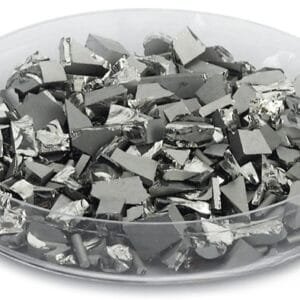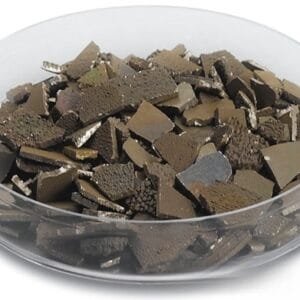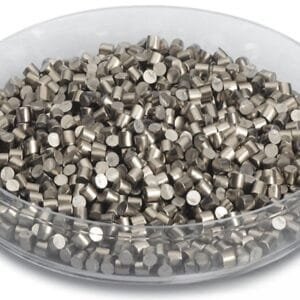Sodium Aluminum Fluoride Evaporation Materials Overview
TFM offers premium sodium aluminum fluoride evaporation materials, which are ceramic-based and have the chemical formula Na5Al3F14. These high-purity materials are essential in deposition processes to achieve optimal film quality. TFM specializes in producing sodium aluminum fluoride evaporation materials with purity levels up to 99.9995%, ensuring reliable performance through rigorous quality control procedures.
Related Products:
- Aluminum Evaporation Materials
- Fluoride Ceramic Evaporation Materials
Sodium Aluminum Fluoride Evaporation Materials Specifications
| Material Type | Sodium Aluminum Fluoride |
|---|---|
| Chemical Symbol | Na5Al3F14 |
| Appearance/Color | White solid |
| Melting Point | 1291°C |
| Density | 2.95 g/cm³ |
| Purity | 99.9% ~ 99.95% |
| Available Shapes | Powder/Granule/Custom-made |
Applications of Sodium Aluminum Fluoride Evaporation Materials
Sodium aluminum fluoride is widely used in various deposition processes such as semiconductor deposition, chemical vapor deposition (CVD), and physical vapor deposition (PVD). It is especially effective in optical applications, wear-resistant coatings, decorative layers, and display technology.
Packaging Information
TFM takes extra precautions to ensure that all sodium aluminum fluoride evaporation materials are properly labeled for easy identification and subjected to stringent quality control. Packaging is designed to prevent damage during transport and storage, ensuring that materials arrive in optimal condition.
Contact Us
TFM is a trusted supplier of high-purity sodium aluminum fluoride evaporation materials, available in various forms like tablets, granules, rods, and wires. We also offer custom forms to meet specific project needs. Additionally, TFM provides a range of complementary products, including evaporation sources, boats, filaments, crucibles, heaters, and e-beam crucible liners. Feel free to contact us for pricing information or inquiries regarding any products not listed.


 MSDS File
MSDS File



Reviews
There are no reviews yet.